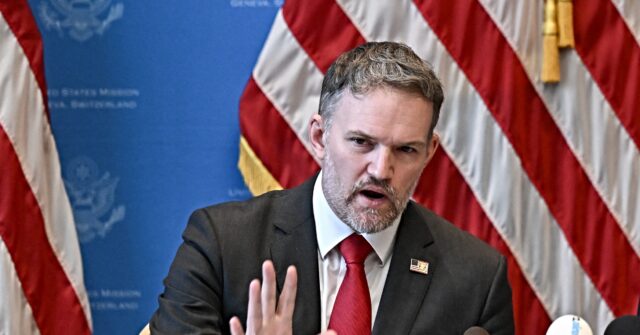LONDON — The United States and China have agreed to a new trade framework aimed at restoring a stalled truce and stabilizing key economic ties. The agreement, reached during two days of talks at Lancaster House in London, includes provisions on critical mineral exports, tariff levels, and Chinese student access to U.S. universities.
President Donald Trump announced Wednesday he had approved the deal, which now awaits final sign-off from Chinese President Xi Jinping. “WE ARE GETTING A TOTAL OF 55% TARIFFS, CHINA IS GETTING 10%,” Trump posted on Truth Social. He also confirmed that China would begin upfront shipments of rare earths and magnets and that Chinese students would continue attending U.S. colleges and universities.
Terms of the Agreement
According to U.S. officials and Trump’s public statement, the framework includes:
- Rare Earths: China will accelerate approvals for exports of rare earth minerals and magnets, essential components for electric vehicles, advanced electronics, and military equipment.
- Tariffs: The U.S. will maintain a combined 55 percent tariff rate on Chinese goods—reflecting both Trump’s original trade measures and second-term increases. China’s tariff level will remain at 10 percent.
- Student Visas: The agreement reinstates access for Chinese nationals to study at American universities, pausing earlier plans to revoke or restrict student visas as part of broader national security concerns.
- Export Controls: Discussions continue around U.S. export restrictions on high-tech goods, such as jet engines and semiconductor design software. While China has sought relief, any such concessions remain subject to further review by President Trump.
Enforcement and Approval Process
Commerce Secretary Howard Lutnick described the outcome as a “handshake for a framework” that still requires President Xi’s formal approval before implementation begins. Chinese Vice Minister Li Chenggang said the two sides had “agreed in principle.”
Jamieson Greer, U.S. trade representative, centre, arrives for trade talks at Lancaster House in London, UK, on Monday, June 9, 2025. (Chris Ratcliffe/Bloomberg via Getty Images)
When asked whether the deal includes enforcement mechanisms, U.S. Trade Representative Jamieson Greer replied: “As long as Donald Trump’s the president, there’s going to be enforcement. Just trust me on that.”
Background to the Talks
The London meeting followed the breakdown of a previous agreement struck in Geneva last month. That deal began to unravel as the U.S. accused China of stalling export licenses for rare earths, while Beijing objected to new American controls on sensitive technologies and threats to revoke student visas.
Last week’s call between Trump and Xi helped reset the diplomatic table, leading to renewed talks and partial resumption of export approvals by China ahead of the London summit.
Next Steps
With Trump’s approval now in place, U.S. officials expect China to finalize its endorsement in the coming days. Treasury Secretary Scott Bessent and Commerce Secretary Lutnick led the American delegation in London, while China was represented by Vice Premier He Lifeng, a close aide to Xi.
Lutnick told reporters Tuesday that the two sides had made significant progress: “I feel really good about where we got to,” he said.
The London framework is not expected to resolve all outstanding issues between Washington and Beijing, but officials say it provides a foundation to avoid further escalation and resume negotiations on longer-term trade challenges.
Read the full article here


